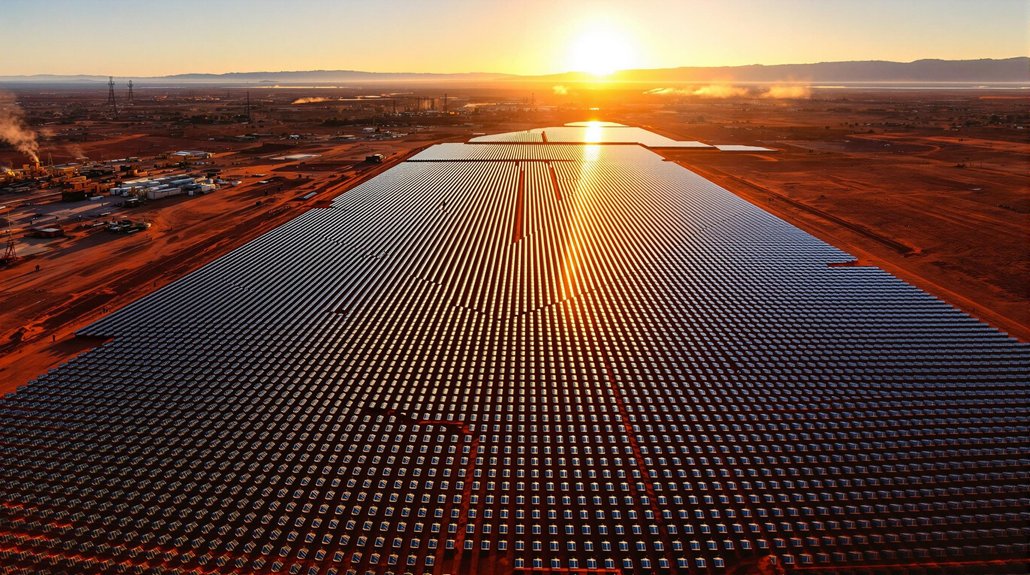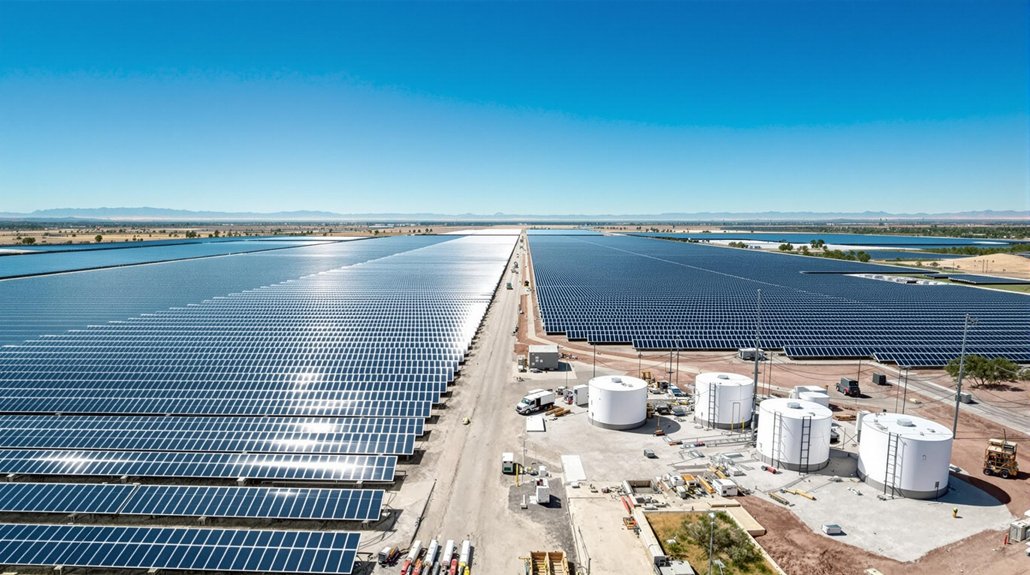Fortescue Future Industries is developing a 644 megawatt solar park near Port Hedland, Western Australia. This project forms part of their $6.2 billion pledge to eliminate fossil fuels by 2030. Located 120km south of Port Hedland, the installation aims to reduce carbon emissions and boost Australia’s renewable capacity. The company plans to create jobs while targeting 2-3 gigawatts of renewable energy with battery storage. Fortescue’s ambitious initiative showcases a major shift in mining sector priorities.
Mining giant Fortescue is making a bold move into renewable energy with its proposed 644 megawatt solar park near Port Hedland in Western Australia. The massive project, submitted for environmental review by Fortescue Future Industries, will be located 120 kilometers south of Port Hedland in Kariyarra Native Title area. It’s a key piece in the company’s strategy to expand its green energy portfolio.
Fortescue boldly enters green energy with massive 644MW solar project in Western Australia’s Kariyarra lands
The solar park will include panel installations, a substation, and 220 kV transmission line spurs connecting to the existing Pilbara Energy Connect transmission system. A battery energy storage system will be co-located at the site, with the entire project expected to operate for 25 years.
This renewable energy initiative greatly boosts Western Australia’s clean power capacity. It supports Australia’s national goal of reaching 82% renewable electricity by 2030. The project will significantly reduce carbon emissions by replacing fossil fuel-based energy generation with solar power. The company expects to save up to $1.2 billion annually through this transition to green energy. The Environmental Protection Authority has opened the proposal for public consultation until April 3, 2025.
The project promises important economic benefits. It will create jobs, stimulate the local economy, and provide opportunities for workers to develop skills in the renewable energy sector. It also enhances energy security by reducing reliance on imported fuels. The solar installation will require minimal maintenance costs compared to traditional power generation methods, creating additional long-term savings.
Fortescue’s solar park is part of a larger $6.2 billion commitment to eliminate fossil fuels by 2030. The company aims to reduce 2.4 million tonnes of emissions and plans to generate 2-3 gigawatts of renewable energy with battery storage by 2030. This project complements their existing 100 MW solar farm at North Star Junction.
The company faces several challenges, including integration with mining operations and potential impacts on local ecosystems and communities. Despite these hurdles, the project sets an important precedent for decarbonizing mining operations.
Fortescue’s solar investment demonstrates the feasibility of large-scale solar for industrial use and contributes to establishing a green metals value chain in Australia. It’s part of a growing trend of mining companies embracing renewable energy initiatives.








